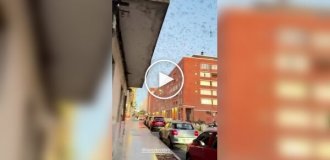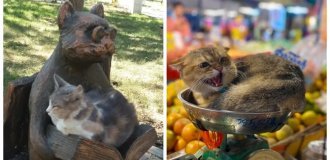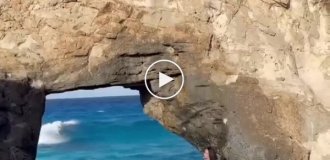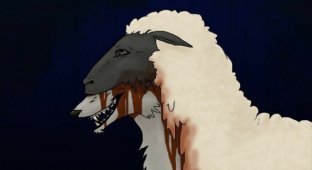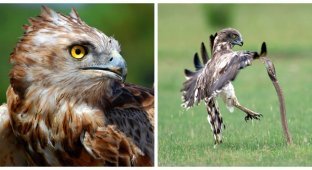Snake eater: a feathered predator that hunts poisonous snakes (10 photos)
Meet the snake eater. These birds hunt poisonous reptiles without having any special qualities. 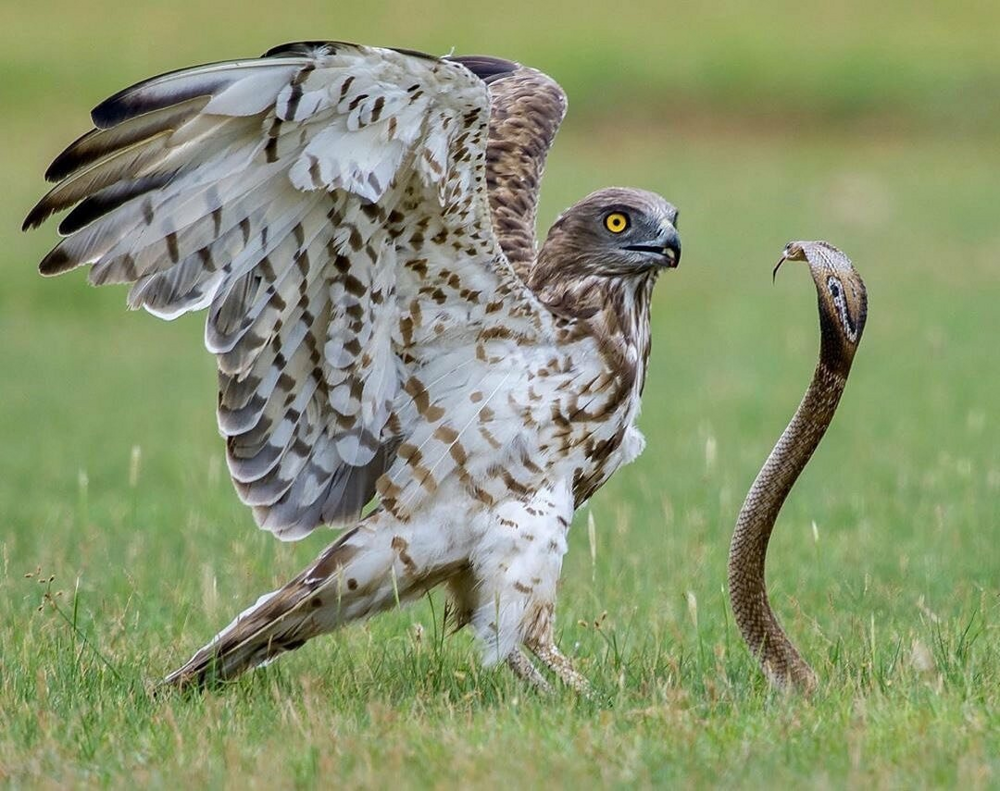
The snake eagle, snake eagle, crachun, or short-legged eagle is an extremely specific representative of its family. Although in appearance it differs little from other birds of prey: a hooked nose, a keen yellow eye, solid dimensions with a wingspan of 2 meters. The birds are found in Africa and throughout most of the Eurasian continent - from Portugal to China and Mongolia, from Estonia to India and the Indonesian islands. 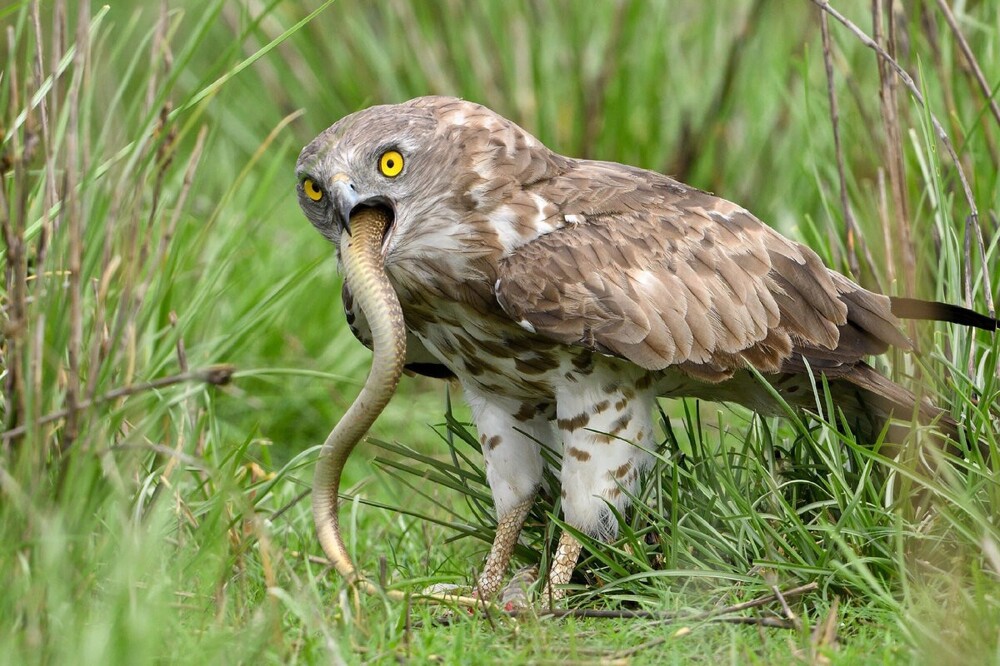
You're probably wondering how the hawks got to such a life? Why did they learn to hunt snakes? And most importantly, how do they manage to stay alive after such fights? Let's sort it out in order. 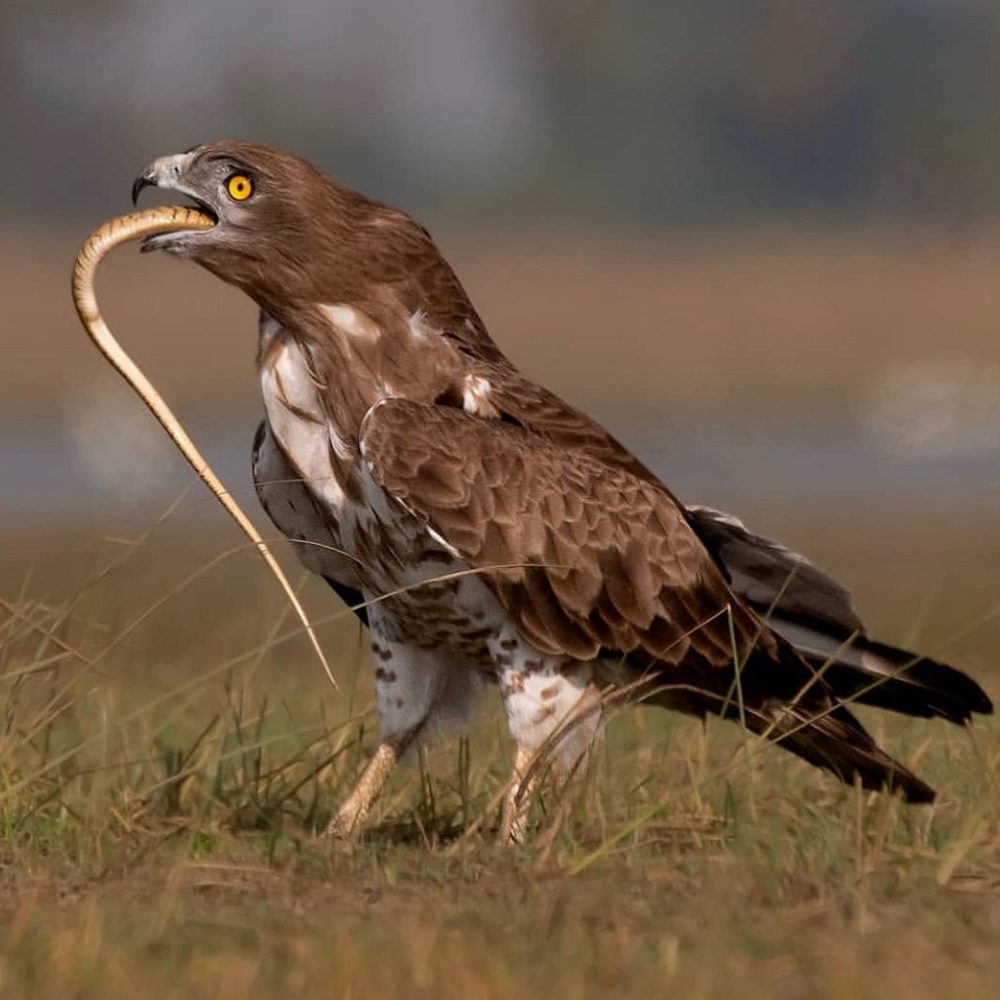
With an extraordinary choice of prey, everything is simple - the fewer contenders for your food, the more you will get. And there are too many people wanting to eat poisonous spaghetti. So they all go to our feathered gourmet. But what if there are no snakes? Cold-blooded reptiles do not crawl to the surface in cold weather. Then the snake eagle becomes an omnivore - it switches to standard prey for birds of prey: small mammals and birds. 
Now let's talk about the hunting method of krachunov. Usually, each animal with a specific diet has some stray items to make life easier. Anteaters have a long nose, camels have a bunch of hard tubercles in their mouths, and honey beetles boast natural feather armor. What do our heroes have? Nothing! These birds have neither resistance to poison, nor any special protective devices, nor even a long beak/paws to nail the snake to the ground from afar. Purely outwardly, snake eaters seem completely unadapted to eating such dangerous prey. 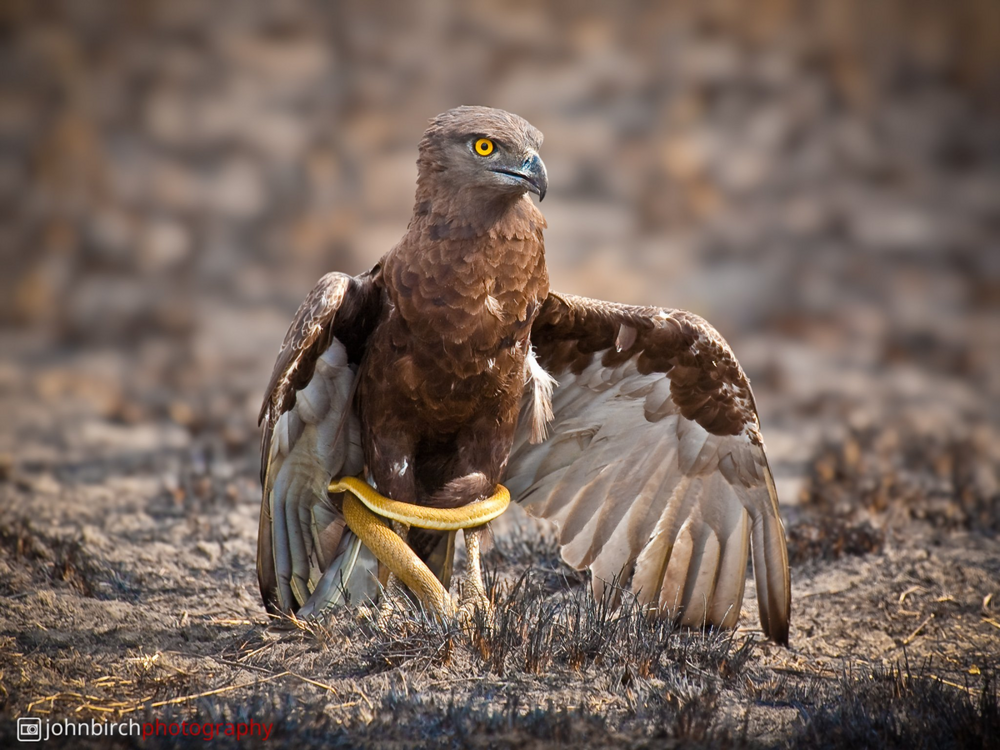
But how then do they manage to stay alive and successfully continue their family line? Sleight of hand and no cheating! Plus hunting skill and a huge dose of luck. To make it clearer how this happens in reality, let’s follow a little of the hunting of our charges. 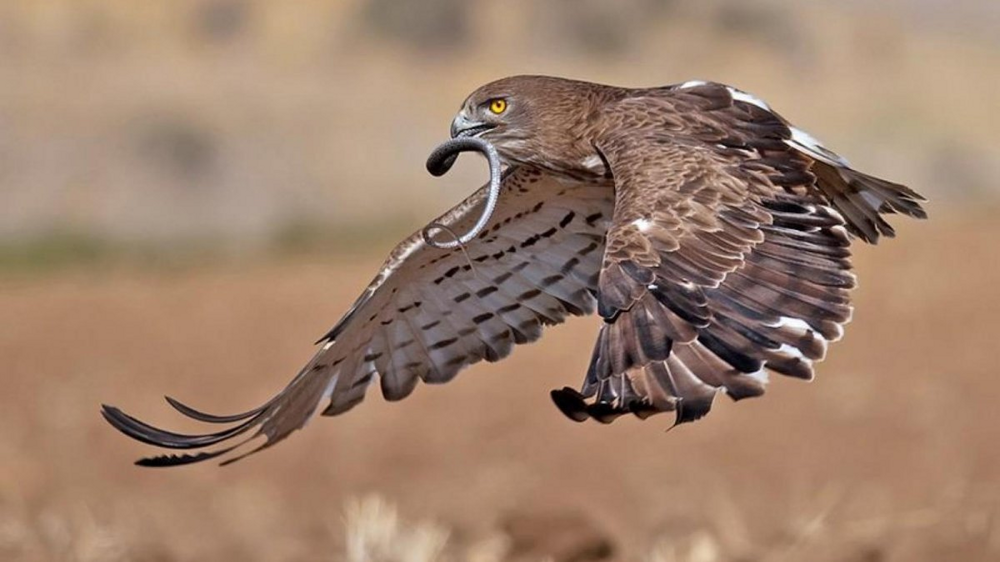
You need to have skill to put on such a serious face with such a ridiculous appearance.
So, the working day of birds begins much later than that of other birds of prey. If they wake up with the first rays of the sun, at about 4-5-6 in the morning, then the crachuns sleep until about 8-10. Don't think, they are not lazy - such a late rise is explained by the rhythm of life of their prey. At this time, the air is already warm enough and cold-blooded reptiles crawl out to bask in the sun. This is where the snake eaters come in!
The birds methodically fly around the nearby surroundings and look for something to profit from. Hawks don’t rise high: sometimes you can’t even notice a snake on the ground, but then try to see it from the air! Therefore, they avoid dense thickets and gravitate towards open forests and open spaces. 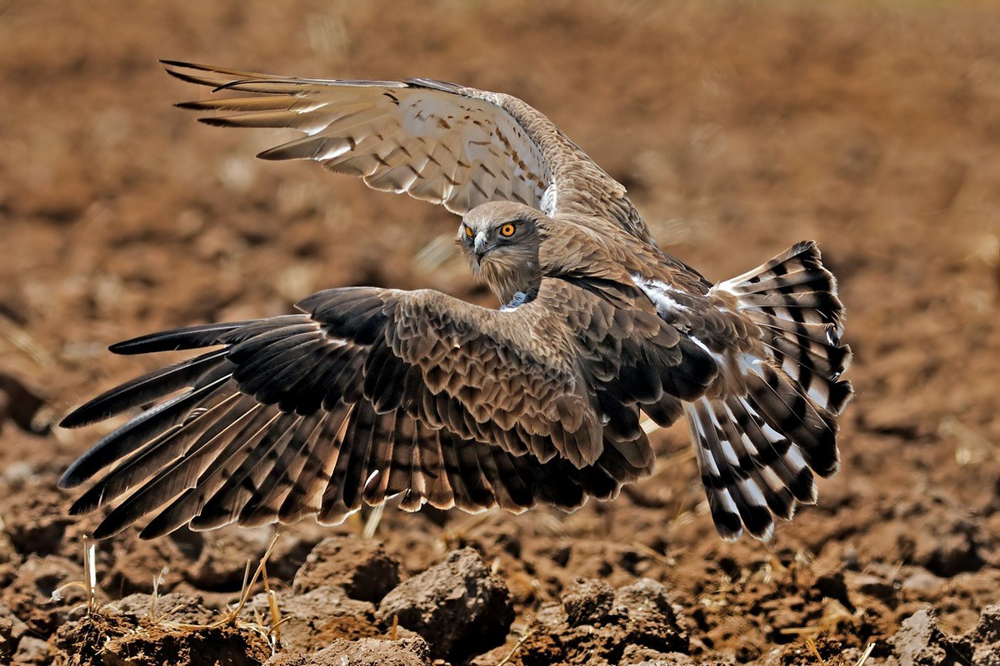
Having noticed a snake, the predator hangs in the air for a couple of seconds, thinking through and calculating all its actions, and then falls down like a stone! The hawk immediately grabs the reptile by the head or neck with its paw to prevent it from biting and very quickly bites its spine in several places. You see, the whole point is to catch the viper before it does. Otherwise, the birds will suffer from a very painful bite and poison. 
The bird swallows small snakes whole, head first, and eats large ones one piece at a time. Well, if the prey is intended for the chick, then the parent crachun simply does not swallow the reptile completely, but leaves the tail dangling outside. Yes, just like in all these cool photos! The process of transferring food to the chick is also not pleasant. When the adults arrive with the prey, the baby grabs the snake's tail and simply pulls the reptile out of the parent's throat! 
Fortunately, snake-eaters always have only one chick. Krachunov cannot feed more children with such a highly specialized diet.yetoy. The breeding season for birds begins in mid-spring. Crachuns are distinguished by their constancy: they use the same nest for several years in a row and form monogamous pairs for life. 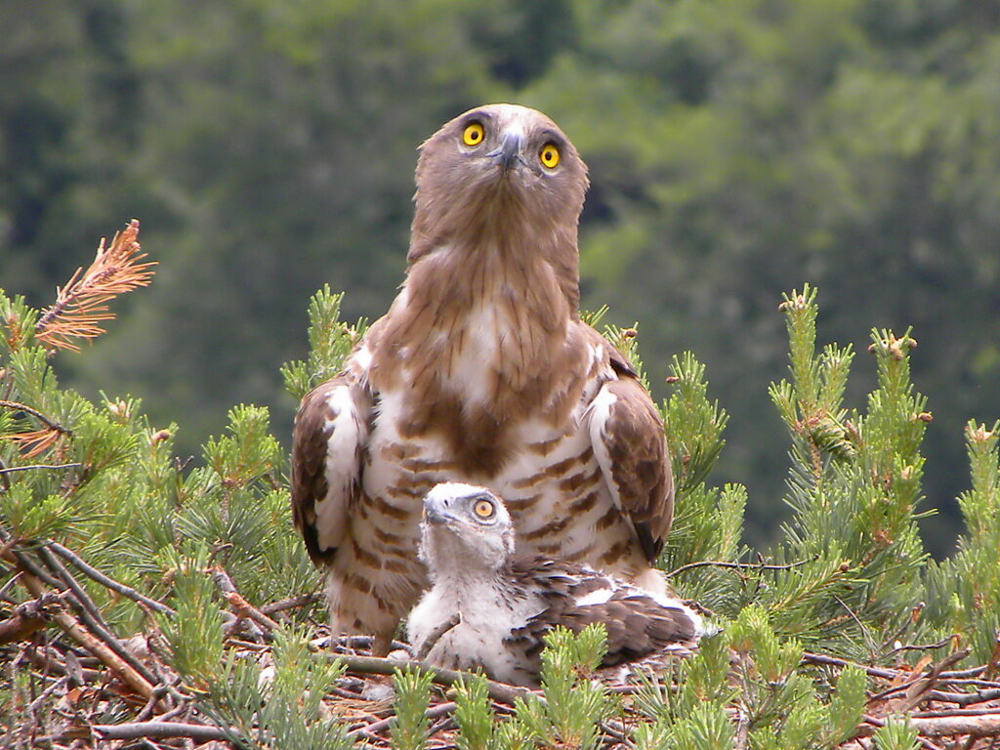
Incubation of the hatchlings lasts approximately 1.5 months, after which the babies will sit in the nest for another 2-3 months and learn all the intricacies of adult life.
Today, snake eaters are practically not in danger. There is no targeted industrial hunting for them, and poachers have no use for them. Snake eaters have no natural enemies in the wild, so the only thing that could lead to a decrease in their population is a drop in the number of snakes in the region.

